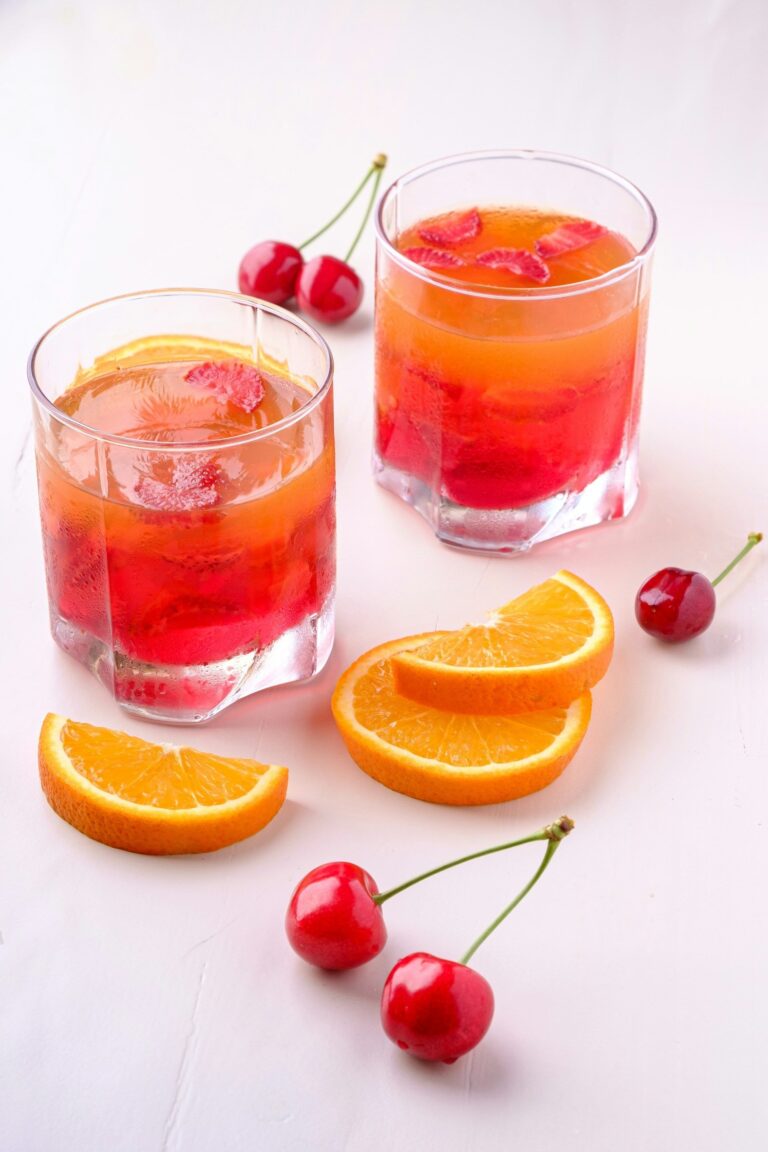Maximize Ginger Juice Quality: Expert Tips for Peeling Before Juicing
[su_note note_color=”#fb8e00″ text_color=”#000000″ radius=”12″]
Ginger is a versatile ingredient that adds a kick of flavor to many recipes, including juices. As for juicing ginger, you may wonder if it’s necessary to peel the skin before extracting the juice.
This article will provide you with the information you need to make an informed decision. Whether you’re a ginger juice enthusiast or just starting to explore this zesty ingredient, we’ll discuss the pros and cons of peeling ginger before juicing. From potential health benefits to tips for incorporating ginger into your juicing routine, we’ve got you covered. So, let’s dive in and discover the best practices for juicing ginger.
[su_box title=”
[/su_box]

Benefits of Peeling Ginger Before Juicing
1. Enhancing the Flavor and Aroma of Ginger Juice
Peeling ginger before juicing enhances the flavor and aroma of the juice. The skin of ginger has a slightly bitter taste that can affect the overall taste of the juice. By removing the skin, you can enjoy a purer and more vibrant ginger flavor, allowing the natural sweetness and spiciness to shine through. This is especially important if you are using ginger juice as a base ingredient in recipes or beverages.
2. Reducing the Risk of Bitterness in the Juice
The skin of ginger can sometimes make the juice taste bitter. This bitterness may not be desirable for those who want a refreshing and enjoyable juicing experience. By peeling the ginger, you can eliminate this potential bitterness and ensure a smoother and more pleasant flavor. This is particularly beneficial if you plan to consume the ginger juice on its own or as a standalone beverage.
3. Improving the Texture and Consistency of the Juice
Peeling ginger before juicing also improves the texture and consistency of the juice. The skin can be fibrous and tough, creating a slightly grainy or lumpy texture in the juice. By removing the skin, you can achieve a smoother and silkier consistency, making the ginger juice more enjoyable to drink. This is especially important if you prefer a velvety and refined texture in your juices.
[su_highlight background=”#f6b40f”]Expert Tips: Peel ginger before juicing for a purer flavor, smoother texture, and to reduce bitterness.[/su_highlight]
Step-by-step guide to peeling ginger for juicing
1. Select fresh and high-quality ginger
When juicing ginger, it’s important to start with fresh and high-quality ginger roots. Look for firm, smooth roots without any mold or wrinkles. The skin should be thin and taut, indicating freshness.
2. Wash and scrub the ginger
Before peeling the ginger, thoroughly wash it under cold running water to remove any dirt or debris. You can use a vegetable brush or your fingers to gently scrub the ginger root. This ensures that the ginger is clean and ready for juicing.
3. Peel the ginger using a peeler or spoon
To peel ginger, you have two options. One method is to use a vegetable peeler. Hold the ginger firmly and glide the peeler along the surface, removing the skin in thin strips. Another option is to use a spoon. Simply scrape the edge of the spoon against the ginger’s skin, applying gentle pressure to remove the peel.
4. Tips for efficient and safe peeling
- Consider using the edge of a spoon instead of a peeler for easier peeling. The spoon method allows for better control and minimizes the risk of accidentally removing too much ginger flesh.
- If the ginger has any knobs or irregular shapes, use a paring knife to carefully remove the skin from those areas.
- Be mindful of your fingers Meanwhile peeling ginger. The skin can be slippery, so take your time and exercise caution to avoid any accidents.
- Once the ginger is peeled, you can proceed to juice it using your preferred method. Remember to follow juicing recipes or guidelines for the best results.
| Benefits of peeling ginger for juicing |
|---|
| Peeling ginger results in a smoother and more pleasant flavor in your juice as the skin may have a slightly bitter taste. |
| Removing the skin helps eliminate any potential dirt or pesticides that might be present on the surface. |
| Peeling ginger can achieve a clearer and more visually appealing result if you prefer a lighter-colored juice. |
Tips for juicing ginger with the skin
1. Considering leaving the skin on
When juicing ginger, some people choose to keep the skin on to enjoy the added flavor and nutritional benefits. The skin of ginger contains gingerol, a compound known for its anti-inflammatory and antioxidant properties.
Keeping the skin on can also save time and effort, as peeling ginger can be a tedious task. Notwithstanding, it’s worth noting that the skin can add a slightly bitter taste to the juice, which may not be appealing to everyone.
2. Adjusting the amount of ginger in the recipe
If you decide to juice ginger with the skin on, it’s important to adjust the quantity of ginger in your recipe. The skin can intensify the ginger flavor, so you may need to use a smaller amount compared to when you peel it.
Start by adding a small piece of ginger with the skin on and taste the juice. If the flavor is too strong, gradually decrease the amount of ginger until you achieve the desired taste.
3. Balancing the flavors and texture of the juice
When juicing ginger with the skin, it’s crucial to balance the flavors and texture of the juice. The skin can add a fibrous texture, which may not be enjoyable for everyone.
To balance the texture, you can strain the juice after juicing to remove any fibrous particles. Additionally, you can add other ingredients like citrus fruits or apples to enhance the flavor and mask any bitterness from the skin.
It’s important to experiment with different ingredient combinations to find the perfect balance that suits your taste preferences.

Recipes and Ideas for Ginger Juice with Peeled Ginger
1. Simple Ginger Juice Recipe
To make a simple ginger juice, follow these steps:
- Start by peeling a knob of ginger using a peeler or the edge of a spoon.
- Next, chop the peeled ginger into smaller pieces.
- Place the ginger pieces in a juicer or blender.
- Add a small amount of water or juice to help with the blending process.
- Blend until the ginger is liquefied.
- Strain the ginger juice using a fine-mesh strainer or cheesecloth.
- Pour the juice into a glass and serve.
2. Ginger and Lemon Juice Recipe
Create a zesty ginger and lemon juice with this refreshing combination:
- Start by peeling a knob of ginger and chop it into smaller pieces.
- Squeeze the juice of a lemon into a glass.
- Add the ginger pieces to the lemon juice.
- Blend the mixture using a juicer or blender until smooth.
- Strain the juice to remove any pulp.
- Pour the ginger and lemon juice into a glass and enjoy.
3. Ginger and Apple Juice Recipe
Try this sweet and tangy ginger and apple juice recipe:
- Start by peeling a knob of ginger and chop it into smaller pieces.
- Core and chop an apple.
- Place the ginger and apple pieces in a juicer or blender.
- Blend until the mixture is well combined and smooth.
- Strain the juice to remove any fibrous bits.
- Pour the ginger and apple juice into a glass and serve.
4. Incorporating Ginger Juice into Smoothies or Cocktails
Add a flavorful twist to your smoothies or cocktails with ginger juice. Here are a few ideas:
- Add a splash of ginger juice to your favorite fruit smoothie recipe for an extra kick of flavor.
- Mix ginger juice with sparkling water, lemon, and a sweetener of your choice for a refreshing ginger mocktail.
- Create a spicy ginger margarita by combining ginger juice, tequila, lime juice, and a touch of agave syrup.
- Experiment with adding ginger juice to other cocktail recipes to enhance their taste and aroma.
By peeling the ginger before juicing, you can ensure a smoother texture and remove any potential bitterness from the skin. Conversely, some people prefer to leave the skin on for added nutritional benefits. Ultimately, it is a matter of personal preference. Enjoy exploring these ginger juice recipes and get creative with incorporating ginger juice into your favorite beverages!
[su_note note_color=”#ea2e0c” text_color=”#ffffff” radius=”8″]Extra Tips: To enhance the flavor of your ginger juice, try adding a pinch of cinnamon or a squeeze of honey.[/su_note]
Health Benefits of Ginger Juice
1. Boosting Digestion and Reducing Bloating
Ginger juice is a natural remedy that has been used for centuries to improve digestion. The active compounds in ginger, such as gingerol, can stimulate the production of digestive enzymes. These enzymes help break down food more efficiently, reducing bloating and discomfort. Ginger juice also has carminative properties that relax the muscles in the gastrointestinal tract, relieving spasms and easing digestive discomfort.
2. Supporting Immune System Function
Ginger juice is packed with nutrients that can boost your immune system. It contains antioxidants like gingerol and zingerone, which have antimicrobial and anti-inflammatory effects. These compounds help fight harmful bacteria and viruses, reducing the risk of infections like colds and flu.
3. Reducing Inflammation and Pain
Chronic inflammation is a common factor in many health conditions, including arthritis and cardiovascular diseases. Ginger juice has powerful anti-inflammatory properties that can help reduce inflammation and associated pain. The gingerol compounds in ginger juice inhibit the production of inflammatory chemicals in the body, providing relief for individuals with inflammatory conditions.
4. Potential Anticancer Properties
Emerging research suggests that ginger juice may have potential anticancer properties. Studies have shown that the bioactive compounds in ginger, such as gingerol and shogaol, have anti-tumor effects on various types of cancer, including breast, colon, and ovarian cancer. At the same time more research is needed, incorporating ginger juice into your diet may provide additional support for cancer prevention and treatment.
Incorporating ginger juice into your daily routine can provide numerous health benefits, including improved digestion, enhanced immune system function, reduced inflammation, and potential anticancer properties. Conversely, it’s important to note that individual experiences may vary, and it’s always recommended to consult with a healthcare professional before making significant changes to your diet or health routine.
Conclusion
As for juicing ginger, it is recommended to peel the ginger before juicing it. In the course of the skin of ginger is edible and contains some nutrients, it can have a strong and bitter taste that may not be desirable in your juice.
By peeling the ginger, you can ensure a smoother and more pleasant juicing experience. Additionally, removing the skin can help eliminate any dirt or residue that may be present on the surface. So, if you want to enjoy a delicious and clean ginger juice, don’t forget to peel your ginger before juicing it.
FAQ about Peeling Ginger Before Juicing
FAQ 1: Should I peel ginger before juicing?
Yes, it is recommended to peel ginger before juicing. The skin of ginger can be tough and fibrous, which can affect the texture and taste of the juice. Peeling the ginger will result in a smoother and more enjoyable juice.
FAQ 2: Can I juice ginger with the skin on?
During it is possible to juice ginger with the skin on, it is not recommended. The skin of ginger can be bitter and fibrous, which can negatively impact the taste and texture of the juice. Peeling the ginger will ensure a better juice quality.
FAQ 3: Does peeling ginger affect its nutritional value?
No, peeling ginger does not significantly affect its nutritional value. The majority of the nutrients in ginger are concentrated in the flesh, not the skin. Therefore, peeling the ginger will not result in a significant loss of nutrients.
FAQ 4: How does peeling ginger affect the taste of the juice?
Peeling ginger before juicing can enhance the taste of the juice. The skin of ginger can be bitter and fibrous, which can negatively impact the overall flavor of the juice. By peeling the ginger, you can achieve a smoother and more pleasant taste.
FAQ 5: Are there any safety concerns when peeling ginger for juicing?
There are no significant safety concerns when peeling ginger for juicing. Nonetheless, ginger can have a knobby and irregular shape, so it is important to use a sharp peeler and exercise caution to avoid any accidental cuts. It is also advisable to wash the ginger thoroughly before peeling to remove any dirt or impurities.

